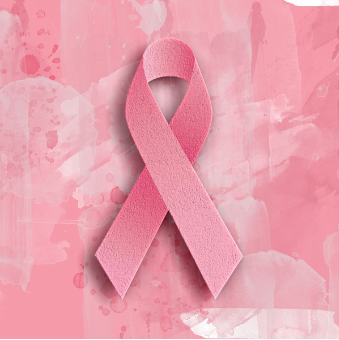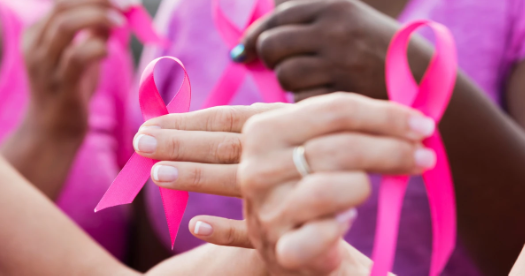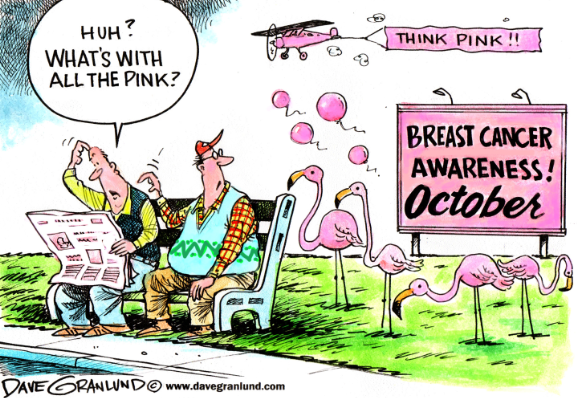Every Year, Breast Cancer Awareness Month is celebrated in October to raise awareness regarding the disease. People worldwide adopt the color pink and the pink ribbon to raise awareness regarding the prevention and timely detection of breast cancer.
However, Breast Cancer, a public health crisis, has become a multi-billion dollar industry. The pink ribbon marketing is used by many companies, who associate themselves with the cause of breast cancer awareness, while at the same time contributing little or spreading misinformation related to the disease.
THE PINK RIBBON MARKETING

The Pink Ribbon is a widely recognised tool symbolising breast cancer awareness. But, during Breast Cancer Awareness month, the market is bombarded with products in pink packaging or endorsing a pink ribbon.
On one hand, it has provided a sense of community to a large number of people and has been instrumental in transforming the topic of breast cancer from a shameful secret to that encompassing an open discussion. Pink ribbon advertising is done in shopping malls, billboards, magazines, television, and other entertainment venues.
However, on the other hand, lack of accountability and transparency, and hypocrisy in pink ribbon marketing culture that tends to exploit a deadly disease for commercial benefits has turned out to be a new problem.
WHAT IS PINKWASHING?
BCAction coined the term pinkwashing in 2002 when launching their campaign – Think Before You Pink. Their website says that a Pink Washer is a company that promotes the cause of raising awareness regarding breast cancer by selling a pink ribbon product but at the same time produces or sells a product that contains chemicals causing the disease.
This inherent paradox in pink ribbon marketing has become a new problem. Consumers, while supporting the cause of the fight against this disease, may perhaps be unknowingly buying products that increase the risk of this disease.
WHY IS PINK RIBBON MARKETING PROBLEMATIC
It is also essential to know that not everyone using the symbol of the pink ribbon with their products is associated with a credible organization. The use of Pink Ribbon is not regulated. This can mean that the product with a Pink ribbon does not necessarily raise funds for breast cancer or works to stop breast cancer.
The lack of accountability has the risk of exploiting the goodwill of those who are working to raise awareness regarding the disease, misrepresenting those affected by the disease. That is why it is crucial to be a critical and responsible consumer while purchasing these products.
HOW HAS THIS MARKETING FAILED IN SEVERAL ASPECTS?
“Grounded in advocacy, deeply held beliefs about gender and femininity, mass-mediated consumption, and the cancer industry, pink ribbon culture has transformed breast cancer from an important social problem that requires complicated social and medical solutions to a popular item for public consumption,” says Gayle A. Sulik in the book Pink Ribbon Blues.
The advocacy of breast cancer awareness through the pink ribbon has brought the issue to light and educated and empowered millions of women. However, several aspects of this pink ribbon culture have impeded the war against Breast Cancer. Several scientific queries and controversies that require research and medical practice are avoided or simplified for the public, such as the survival benefits of mammography, the various causes of the disease etc.
Profit earning also plays a major role in the billion-dollar cancer industry while defining the pink ribbon culture. Apart from this, the pink paraphernalia and the millions of active volunteers do not represent or depict the women suffering from the disease and their experiences. Thus, the focus on creating positive imagery for the disease tends to exclude the real-life experience and perhaps the target audience.
WHAT IS THE WAY AHEAD?
It is important to note that the Breast Cancer Awareness movement is not a unitary movement run by a single organization. It must include the participation of various stakeholders to provide support services, fill gaps in care, help diagnosed people understand their medical condition, seek precautionary measures, inform the public regarding cancer, and advocate for public policies aiming at improving the quality of care.
Corporate sponsorship and local fundraisers are equally important to provide the movement with financial backing, however, it is upon the people to ensure that donation is made responsibly. Active citizens can press for accountability and transparency within such organizations. These actions are conducive to fostering greater breast cancer awareness over the long term.
While stories of fight and survival against the disease are essential for society to have an optimistic attitude towards the disease, the stories of suffering, death and struggles are equally essential to open up new avenues of research into various experiences of the illness, finding out new ways of coming and providing support.
MAKING THE MOVEMENT MORE INCLUSIVE

The pink imagery of the movement against breast cancer has tended to ignore a section of the population that may also suffer from the same disease and has stereotyped this type of cancer for a particular gender. Men and women share some of the same risk factors for breast cancer. These include having a family history of breast cancer or BRCA1 and BRCA2 mutations that may increase cancer risk. Obesity is another risk factor for both males and females. The hormone estrogen produced in both sexes is also responsible for increasing breast cancer risk.
The challenges to diagnosing breast cancer in males include men, not being aware that even they are prone to this disease and should screen themselves for breast cancer. Most of the time, men are unaware of the symptoms of the disease, like most women. These symptoms, even if identified, may be ignored due to stigmas and fear of emasculation. Men usually are diagnosed with breast cancer at an older age and with cancer at a more advanced stage, for these and other reasons, often leading to poorer outcomes.
There is a risk of breast cancer even in transgender women. Though the risk may not be as high as that of the general female population, transgender women using hormone treatment have a higher risk of breast cancer than males. Transgender people receive hormone treatment to induce desired physical changes. This hormone treatment can increase the risk of breast cancer. However, information about the risk of breast cancer in transgender people is currently limited.
CONCLUSION
Pink ribbon culture has indeed been a successful step towards breast cancer awareness. Now, people can talk about the disease and have even sensitised the public towards this disease. However, the commercial exploitation of pink ribbons to promote products by companies remains a major problem.
Here comes the role of aware citizens and active volunteers who can speak against misinformation, which is sometimes spread by pink ribbon marketing and can ask for transparency and accountability while buying products or making donations. There is also a need to make this movement more inclusive as breast cancer is not a gender-specific phenomenon that concerns only women.
Campaigning should be done to inform the public that men, women and transgender women are equally prone to this disease, though the risk is higher in females. This type of campaigning should also focus on removing the stigma attached to instances of breast cancer in males and creating awareness among the public regarding timely detection and screening of symptoms.
Breast cancer awareness is not a one-dimensional issue but a multifaceted challenge that requires a coordinated effort from all sectors of society. By leveraging multiple platforms, engaging stakeholders, utilizing the media’s influence, and fostering international collaboration, we can ensure that breast cancer awareness becomes an enduring part of our global health consciousness.
-MALYA SINGH
Must read – ONE NATION ONE ELECTION TO EMPOWER INDIA- A PIVOTAL AND BENEFICIAL STEP?


